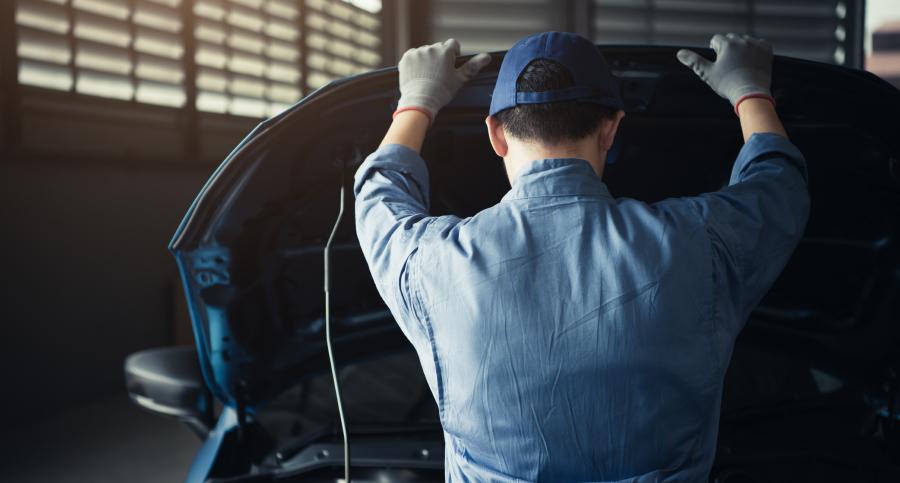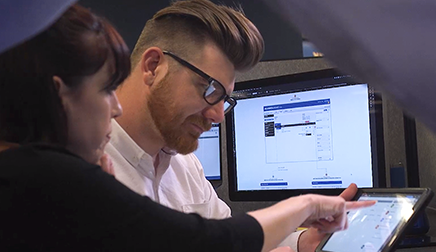
Reducing Comebacks ... now more than ever

Without a doubt, the world-wide COVID-19 pandemic will be the defining event of 2020. Along with memories of mass closures, social distancing and financial volatility, we will also remember how communities and nations across the globe were bound together in solidarity to overcome a common threat.
For most automotive repair shops in the U.S., being classified as an essential service has created the new challenge of how to safely conduct business during a health crisis. These unprecedented times have also given shops an opportunity to take a closer look at ways to improve their daily operations and run more efficiently on diminishing profit margins.
Nobody wants to duplicate the risks involved in taking their car back to a shop, so eliminating comebacks has taken on a new sense of urgency.
One nagging concern shared by many automotive repair shops has been how to curtail comebacks, but the problem is especially critical now during a period when customers are already apprehensive about going out in public. Nobody wants to duplicate the risks involved in taking their car back to a shop, so eliminating comebacks has taken on a new sense of urgency. In this article, I’d like to talk about why comebacks occur and how to reduce them to an absolute minimum.
Many technicians and shop owners blame the complexity of newer vehicles as the reason for comebacks and repeat repairs. Others say is because many technicians are in a hurry to clock flat-rate hours, so they jump to quick diagnostic conclusions or fail to install a part correctly. While technicians often bear the brunt of the blame, and sometimes deservedly so, many comebacks begin on the service drive. Other times a comeback is simply due to a bad part or because the job is given to a technician with an inadequate skill level. Regardless of the reason, comebacks are part of doing business. Taking a proactive approach to understand why comebacks happen and creating a process to reduce them will provide the best results.
Improve the Write-up Process
In my experience, many service advisors overlook two important facts. The first is that many of them underestimate what the customer is telling them. Customers know their cars better than anyone. They drive the vehicle every day; they’ve given their vehicle a name. Believe me, they know when something is wrong. The second is that customers will form expectations based on what they perceive they were told on the service drive. When a service advisor says, “We’ll take a look and let you know what we find,” what many customers hear is that their vehicle will be fixed today.
To avoid misunderstandings during the write-up process, be sure to clearly identify and define the customer’s concern so your technicians can properly diagnose and repair the problem. Also, clarify expectations with the customer.
To avoid misunderstandings during the write-up process, be sure to clearly identify and define the customer’s concern so your technicians can properly diagnose and repair the problem. Also, clarify expectations with the customer. Create diagnostic and repair cheat sheets for your service advisors to prompt them to ask the right questions. Each sheet can cover different systems or topics such as drivability, noise/vibration/harshness, transmission, HVAC and electrical problems. The more useful information that’s harvested during the write up process, the better chance the technician has of understanding and fixing the problem. Ask your technicians to help create the questions. They have a good idea of what is important for them to know. In addition to reducing comebacks, cheat sheets often save technicians a lot of time. To stay compliant with recent Center for Disease Control and Prevention (CDC) guidelines for social distancing at repair facilities, many shops are posting cheat sheets on their websites for their customers to fill out before they drop their vehicles off at the shop.
Get Customers Involved
If you can’t duplicate the noise, vibration or drivability problem, call the customer to come down and drive the vehicle with the technician. If your shop is still following social distancing guidelines, an alternative is to have the technician call the customer to get a first-hand description of the problem. The technician can ask probing questions to better focus on exactly what the customer is experiencing. I can’t count the number of times I’ve gone on a test drive, or spoke directly with the customer, only to discover that it’s the way they drive the vehicle or their failure to read the owner’s manual that’s actually causing the problem. Other times, the customer’s concern can't be duplicated on the test drive. If you've established good one-on-one communication up front, your customer may be disappointed, but they'll thank you for taking the time to truly address their concern. This is a great way to earn your customer’s trust. If the problem does occur while the technician is driving, completely understanding the issue and the exact conditions necessary to duplicate the problem, will help facilitate an accurate, come-back free repair.
Fix Problems Before the Vehicle Leaves the Shop
It sounds simple but many shops fail to double check their work before the vehicle is returned to the customer. Yes, it does take more time to check someone’s work, and to comply with CDC guidelines, the vehicle will need to be sanitized before and after each staff member enters or leaves the vehicle. But compared to the costs related to comebacks, the extra time spent is well worth the effort.
So, who should perform quality control checks? I found it very effective to have technicians check of their fellow technician’s work. Sure, you could appoint someone whose primary job it is to verify repairs, but that’s a luxury typically reserved for shops with large operating budgets. When a technician knows their work will be checked by their peers, they are more likely to take a little extra time to be sure the job is done right. The benefit of performing good quality checks is that problems can be repaired before the vehicle is returned to the customer.
If it’s a Parts Failure
It’s a good idea to have policies and procedures in place that outline how comebacks are handled to eliminate any misconceptions or surprises. One of those policies need to cover parts failures. If it’s a misdiagnosis or blatant mistake on the technician’s part, they should eat the labor. But if it is a defective part, that’s not the customer’s, technician’s or the shop’s fault. Most parts suppliers will warranty the part but will not cover the labor to reinstall it. Some shops may disagree, but I lean toward paying the technician to replace a defective part. It doesn’t hurt to ask your parts supplier to pay the labor. Many will do so to keep your business. When faced with numerous bad parts from a supplier, the dealership is usually a safe bet. OEM parts or aftermarket parts that are known to meet OEM specifications will often prevent comebacks that are a result of defective parts.
OEM parts or aftermarket parts that are known to meet OEM specifications will often prevent comebacks that are a result of defective parts.
Provide Adequate Training
It’s the shop’s responsibility to provide the facility, equipment and repair information to help their technicians successfully do their jobs. In addition to that, I’ve found that providing training to everyone in the shop pays big dividends. It helps to reduce comebacks and increases staff retention by proving to them that you have a vested interest in their future. It also equips your technicians to be more knowledgeable and efficient when taking on more difficult diagnostic and repair jobs. When they are successful, the shop is successful.
Involve Staff in Creating Solutions
Have your techs fill out a survey that asks them what they think causes comebacks, what the costs are associated with a comeback and what they suggest can be done to reduce them. Once you compile their input, discuss the survey results in a team meeting, then implement the suggestions you all agree on. By doing that, your staff is more likely take ownership of the solutions they provided and try harder to make them successful. When they do achieve success, reward them.
Track Comebacks
As a final suggestion to help reduce comebacks, it’s crucial to understand why they are happening in your shop. Every shop has a different dynamic so the reasons can vary. By tracking every comeback and the costs associated with them, you will quickly discover if it was a problem on the service drive, in the shop or because of poor parts quality. You can then make necessary adjustments in your policies and strategies based on the trends you’re seeing in your tracking reports.
Conclusion
During this global health crisis, shops are experiencing a dramatic decrease in business. This is an opportune time to formulate suitable policies and strategies to make eliminating comebacks in your shop something to add to your memories of 2020.
Want to see how ALLDATA can improve tech efficiency? Check out our suite of products, each designed to contribute to both shop efficiency and productivity.
If you would like to read more articles like this one please subscribe to ALLDATA News.





